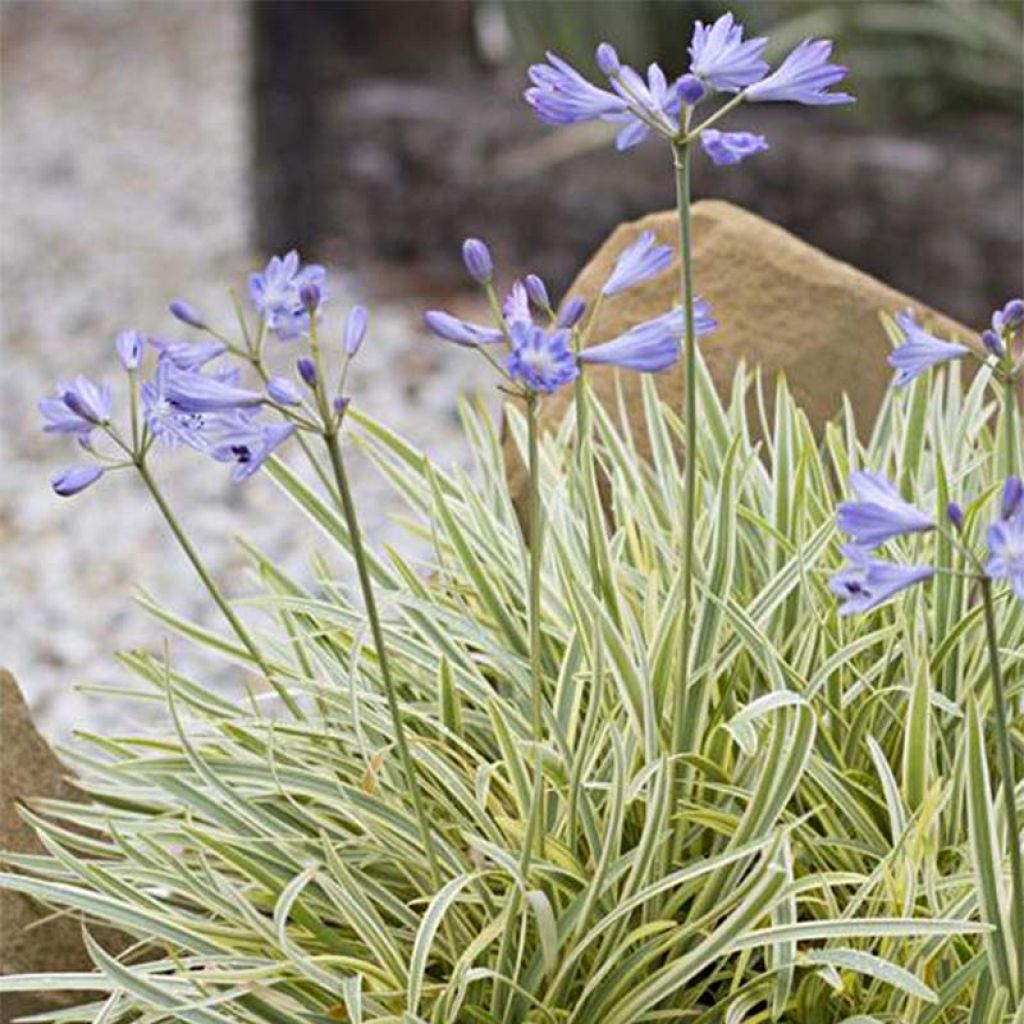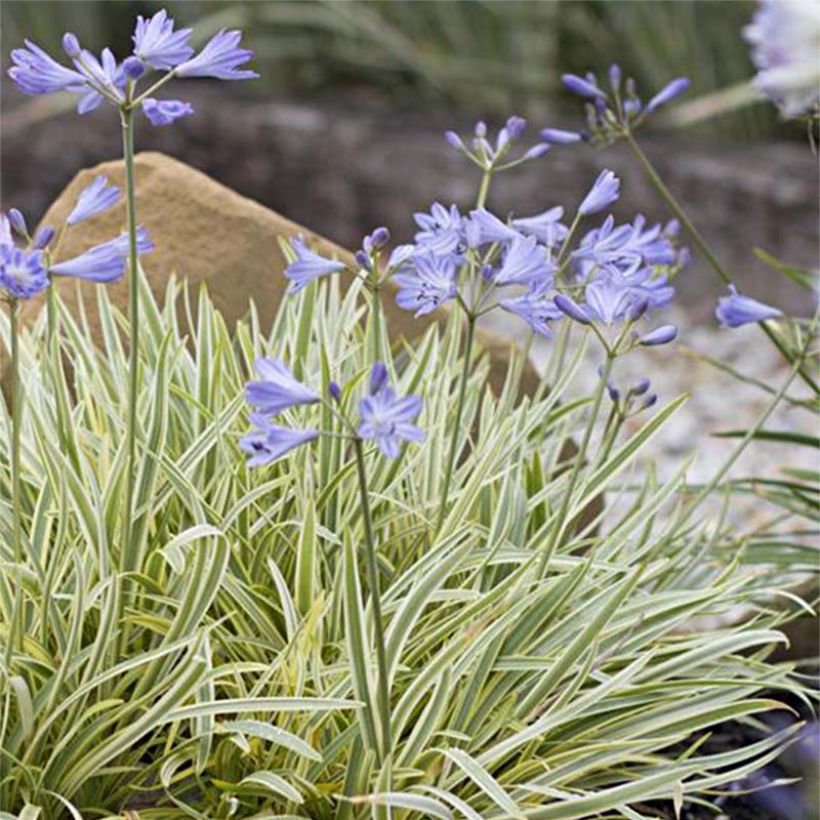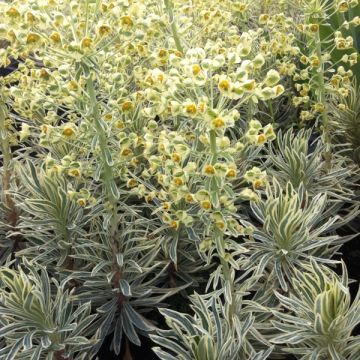

Agapanthus Golden Drop


Agapanthus Golden Drop
Agapanthus Golden Drop
Agapanthus x campanulatus Golden Drop®
African Lily, Lily of the Nile
In its first year, it's struggling to grow back, I have three, four leaves coming out with great difficulty, even though I planted them in full sun as advised.
Gael, 20/05/2023
This item cannot be shipped to the selected country
Delivery charge from €5.90
More information
Schedule delivery date,
and select date in basket
This plant carries a 12 months recovery warranty
More information
We guarantee the quality of our plants for a full growing cycle, and will replace at our expense any plant that fails to recover under normal climatic and planting conditions.
From €5.90 for pickup delivery and €6.90 for home delivery
Express home delivery from €8.90.
Does this plant fit my garden?
Set up your Plantfit profile →
Description
Agapanthus 'Golden Drop', when it was presented at the Chelsea flower show in 2012, caused a sensation. Firstly because of its small size, not exceeding 40cm (16in) in all directions, and then because of the delicacy and brightness of its variegated foliage in pale yellow, cream, and pale green. As for its summer flowering, it is generous but unusually light, made up of small clusters of light lavender blue flowers carried well above the foliage. The small size of this variety naturally makes it suitable for terraces or small gardens. But its wild plant appearance also promises a very bright future in natural settings. This deciduous and hardy bulbous plant is grown in full sun, in rich, well-drained, moist to dry soil.
This new hybrid Agapanthus is a bulbous plant from the lily family, relatively hardy and its foliage disappears in autumn.
The 'Golden Drop' variety is an exceptional New Zealand hybrid, ultra compact and variegated with yellow. The plant grows from a short rhizome with fleshy roots. It forms a dense clump, composed of particularly thin ribbon-like leaves that resemble those of certain grasses. They are a somewhat greyish green, broadly edged with more or less pale yellow or washed with pale green, deciduous. When in flower, it will not exceed 60cm (24in) in height (40cm (16in) for the foliage) and 40 to 50cm (16 to 20in) in width. From early to midsummer, from June to August, its sturdy floral stems appear, crowned with umbels containing only 7 to 10 campanulate flowers in a lovely light blue with lavender nuances. This bulbous plant is hardy to about -12°C (10.4°F), in well-drained soil and sheltered exposure.
The 'Golden Drop' Agapanthus is used in the background of borders, surrounded by low-growing perennials with grey foliage for example, or to border pathways, with the base covered in creeping plants (Cerastiums, Artemisias, creeping Euonymus, Aubrietas). It can also be associated with perennial or shrub salvias, border daylilies, as well as Alstroemerias and lilies. It can also be grown in large pots on the terrace, in a pretty wide pot that will allow this plant to produce numerous flowering stems. This method of cultivation has the advantage of being able to store it during winter in case of intense frosts. It is a plant that thrives by the seaside, in an English cottage, and even in a wild or naturalistic-style garden, which is water-efficient.
Report an error about the product description
Agapanthus Golden Drop in pictures






Flowering
Foliage
Plant habit
Botanical data
Agapanthus
x campanulatus
Golden Drop®
Alliaceae - Liliaceae
African Lily, Lily of the Nile
Cultivar or hybrid
Other Agapanthus - Lily of the Nile
Planting and care
The 'Golden Drop' Agapanthus is grown in full sun in a warm location, in a protected area facing south. Place it in a rich and moist but very well-drained soil to optimize its hardiness. Water Agapanthus regularly during the growth period (twice a week) but not at all in winter. Mulch the base with a layer of dead leaves, about 20cm (8in) thick, covered with a mesh to prevent wind damage. Snow also provides excellent protection against excessive moisture and cold. If grown in a pot, bring the plant indoors to a non-heated space to protect it from severe frost. When planting, place them 10cm (4in) deep in a mixture of leaf compost and compost. Once established in the ground, avoid disturbing the agapanthus. Remove faded leaves in autumn. Cut back the flower stems to prevent the plant from exhausting itself by producing seeds.
Planting period
Intended location
Care
-
, onOrder confirmed
Reply from on Promesse de fleurs
Mediterranean perennials
Haven't found what you were looking for?
Hardiness is the lowest winter temperature a plant can endure without suffering serious damage or even dying. However, hardiness is affected by location (a sheltered area, such as a patio), protection (winter cover) and soil type (hardiness is improved by well-drained soil).

Photo Sharing Terms & Conditions
In order to encourage gardeners to interact and share their experiences, Promesse de fleurs offers various media enabling content to be uploaded onto its Site - in particular via the ‘Photo sharing’ module.
The User agrees to refrain from:
- Posting any content that is illegal, prejudicial, insulting, racist, inciteful to hatred, revisionist, contrary to public decency, that infringes on privacy or on the privacy rights of third parties, in particular the publicity rights of persons and goods, intellectual property rights, or the right to privacy.
- Submitting content on behalf of a third party;
- Impersonate the identity of a third party and/or publish any personal information about a third party;
In general, the User undertakes to refrain from any unethical behaviour.
All Content (in particular text, comments, files, images, photos, videos, creative works, etc.), which may be subject to property or intellectual property rights, image or other private rights, shall remain the property of the User, subject to the limited rights granted by the terms of the licence granted by Promesse de fleurs as stated below. Users are at liberty to publish or not to publish such Content on the Site, notably via the ‘Photo Sharing’ facility, and accept that this Content shall be made public and freely accessible, notably on the Internet.
Users further acknowledge, undertake to have ,and guarantee that they hold all necessary rights and permissions to publish such material on the Site, in particular with regard to the legislation in force pertaining to any privacy, property, intellectual property, image, or contractual rights, or rights of any other nature. By publishing such Content on the Site, Users acknowledge accepting full liability as publishers of the Content within the meaning of the law, and grant Promesse de fleurs, free of charge, an inclusive, worldwide licence for the said Content for the entire duration of its publication, including all reproduction, representation, up/downloading, displaying, performing, transmission, and storage rights.
Users also grant permission for their name to be linked to the Content and accept that this link may not always be made available.
By engaging in posting material, Users consent to their Content becoming automatically accessible on the Internet, in particular on other sites and/or blogs and/or web pages of the Promesse de fleurs site, including in particular social pages and the Promesse de fleurs catalogue.
Users may secure the removal of entrusted content free of charge by issuing a simple request via our contact form.
The flowering period indicated on our website applies to countries and regions located in USDA zone 8 (France, the United Kingdom, Ireland, the Netherlands, etc.)
It will vary according to where you live:
- In zones 9 to 10 (Italy, Spain, Greece, etc.), flowering will occur about 2 to 4 weeks earlier.
- In zones 6 to 7 (Germany, Poland, Slovenia, and lower mountainous regions), flowering will be delayed by 2 to 3 weeks.
- In zone 5 (Central Europe, Scandinavia), blooming will be delayed by 3 to 5 weeks.
In temperate climates, pruning of spring-flowering shrubs (forsythia, spireas, etc.) should be done just after flowering.
Pruning of summer-flowering shrubs (Indian Lilac, Perovskia, etc.) can be done in winter or spring.
In cold regions as well as with frost-sensitive plants, avoid pruning too early when severe frosts may still occur.
The planting period indicated on our website applies to countries and regions located in USDA zone 8 (France, United Kingdom, Ireland, Netherlands).
It will vary according to where you live:
- In Mediterranean zones (Marseille, Madrid, Milan, etc.), autumn and winter are the best planting periods.
- In continental zones (Strasbourg, Munich, Vienna, etc.), delay planting by 2 to 3 weeks in spring and bring it forward by 2 to 4 weeks in autumn.
- In mountainous regions (the Alps, Pyrenees, Carpathians, etc.), it is best to plant in late spring (May-June) or late summer (August-September).
The harvesting period indicated on our website applies to countries and regions in USDA zone 8 (France, England, Ireland, the Netherlands).
In colder areas (Scandinavia, Poland, Austria...) fruit and vegetable harvests are likely to be delayed by 3-4 weeks.
In warmer areas (Italy, Spain, Greece, etc.), harvesting will probably take place earlier, depending on weather conditions.
The sowing periods indicated on our website apply to countries and regions within USDA Zone 8 (France, UK, Ireland, Netherlands).
In colder areas (Scandinavia, Poland, Austria...), delay any outdoor sowing by 3-4 weeks, or sow under glass.
In warmer climes (Italy, Spain, Greece, etc.), bring outdoor sowing forward by a few weeks.























































